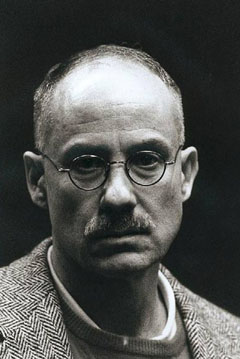(This review originally appeared in the The Star-Ledger of Newark, Dec. 29, 1996.)
"MY DARK PLACES"
By James Ellroy
Knopf, $25.00
The first image that greets readers of "My Dark Places" is a photograph of the author's mother. She's lying face-down in a patch of ivy, her floral print dress loose around her. A nylon stocking and a length of cord are cinched tightly around her neck. Her bare back is covered with insect bites and post-mortem lividity.
If that's not enough to let you know this is no ordinary memoir, what follows soon will. For this, his 13th book, bestselling crime novelist James Ellroy ("American Tabloid," "L.A. Confidential") has focused on a true-life mystery - the 1958 murder of his own mother.

At the time of her death, Geneva Hilliker Ellroy, a divorcee and closet alcoholic, was a 42-year-old registered nurse raising her 10-year-old son in a seedy Los Angeles suburb. After a Saturday night on the town, during which witnesses spotted her with a dark-haired stranger, she was raped, beaten and strangled. Her body was discovered the next day in a nearby schoolyard. Her killer was never found.
In 1994, Ellroy signed on to write a piece about the case for GQ magazine, and hired a retired L.A. County homicide investigator named Bill Stoner to help him reexamine evidence and pursue new leads. "My Dark Places" is the fruit of their two-year investigation.
For Ellroy, his mother's murder was only the first step in his own personal waltz into darkness. Forced to live full-time with his layabout father, Ellroy grew increasingly alienated and anti-social. In his twenties and early thirties, his life became an accelerating spiral of drug and alcohol abuse. Often homeless for weeks at a time, Ellroy began to wallow in his own degradation. He broke into homes to steal women's underwear, shoplifted, took every drug he could get his hands on and eventually ended up doing a 30-day stint in the L.A. County jail for trespassing.
With the help of A.A. and his own obsession with literature, Ellroy eventually got himself on a more productive track in the early 1980s. While working as a caddy, he wrote and published his first novel, "Brown's Requiem," and began to channel his rage and obsessions into his writing. His books since have been dark, disturbing and infused with a bleak world view that's pure noir.
Just what Ellroy and Stoner hoped to accomplish by reopening a nearly 40-year-old murder investigation is another question. Knowledgeable as they both are about crime and punishment, it seems unlikely either actually had much hope of turning up the killer. They sure give it a run, though, reinterviewing elderly witnesses, poring over decades-old police reports and going on national television with an appeal for information about the case. One of the book's strongest moments comes when Ellroy visits an evidence warehouse and retrieves the package containing his mother's personal effects. Opening a plastic bag sealed for more than three decades, he handles the dress his mother wore on the night of her death and recalls the smell of her perfume. In another bag, he finds the stocking and cord that ended her life.

One thing "My Dark Places" does prove is that Ellroy is as compelling a non-fiction writer as a novelist. If anything, the restrictions of actual events add a discipline and focus to his work that is sometimes missing in his novels. And though his characteristic bebop prose style is still in evidence, the book's autobiographical elements are unflinchingly honest. His account of his childhood makes it clear the real violence in the Ellroy family happened long before his mother's death.
But the investigation has mixed results. Tips pour in, most of them baseless. Stoner and Ellroy investigate the more credible ones, but nothing pans out. In the meantime, Ellroy becomes almost as obsessed with some of Stoner's other cases, including a brutal rape/murder that strikes close to home.
Eventually, Ellroy delves back into his own family history. He and Stoner travel to Tomah, Wisc., the small town where his mother grew up, and meet with family members still living there. They find photos of his mother as a young woman. "I looked at the pictures," Ellroy writes. "Bill looked at them. He said Geneva was the best-looking girl in Tomah, Wisconsin. I said she couldn't wait to get out forever."
By then, it's clear Ellroy's quest is not so much to catch a murderer as to find his own mother, to understand the events that shaped her life and led her to that last lonely rendezvous. He knows her killer is likely long dead, and that the memories of the people who knew her fade with each passing day. But consigning her to the past is not so easy. At the close of the book, his obsession burns as brightly as it did at the beginning. The details of the 36-year-old murder become almost irrelevant. In the end, Ellroy is no righteous avenger. He's a lost boy trying in vain to exorcise a mother's ghost. And "My Dark Places" is a stone heartbreaker of a book.
